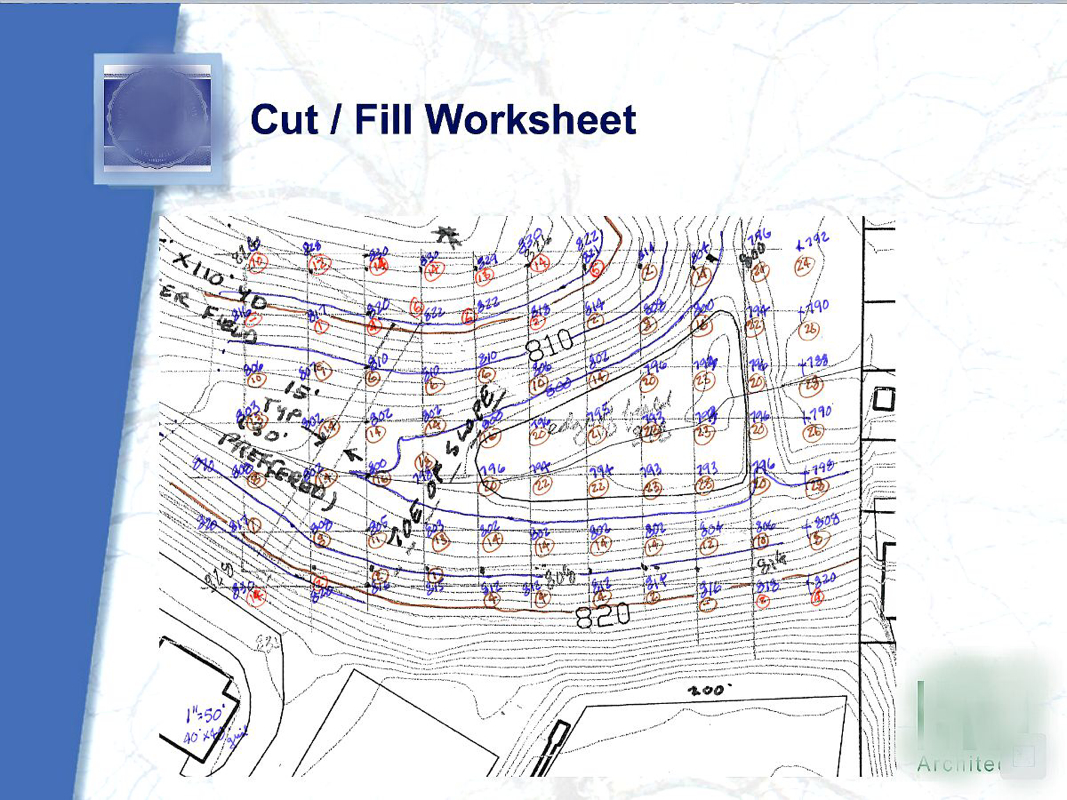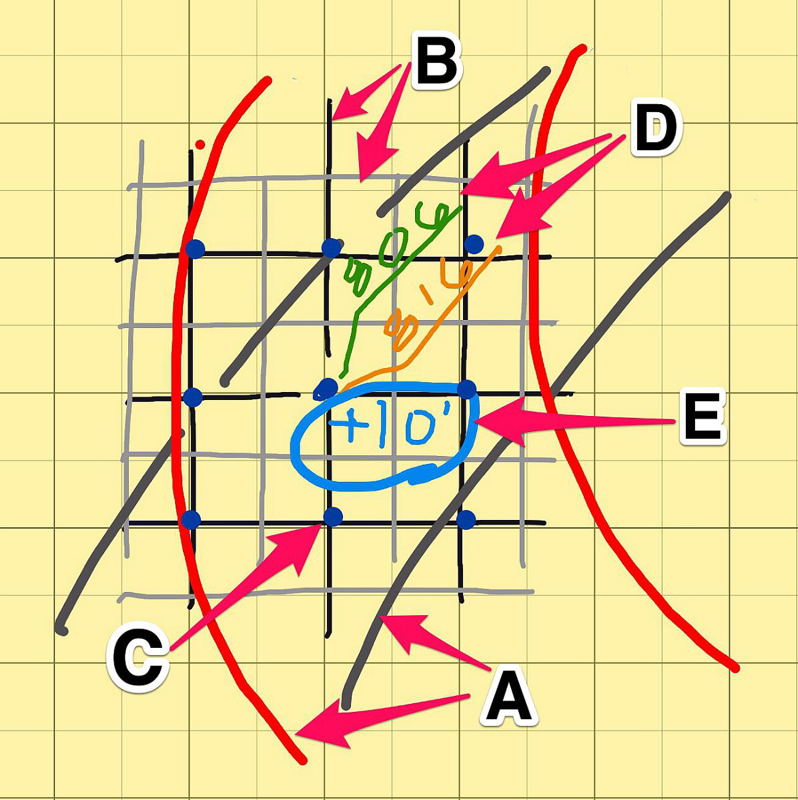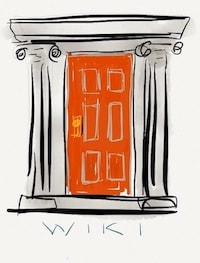|
Every time I have used this technique for understanding cut and fill, an engineer has told me "You can't do it that way" or even "That doesn't work". And yet I always get useful information that engineering can't provide. Well, it can provide it but there are impediments. First you need an engineer on board. Second you need a proposed topo to give him to work from. And third you have to convince him to do this several times. Of course all this takes a week to get the engineer on board, a day to create and send the proposed topo, and an indeterminate amount of time to get the revisions. I can use this technique to get a 'good-enough' answer in a couple of hours. Why do I want to know about cut and fill? Basically I want to know because I don't want everyone to get excited about my fabulous site plan only to learn later that earthwork will cost more than the building. So I want to know that my idea will be defendable. Plus I love this site planning stuff. Right out of college I had great small-firm experience. I had to do everything. And learn how pretty damn quick or become a 'do-for'. "Hey, Rick, DO this FOR me." I preferred to run my own show. That great experience included siting the building including site plans and grading plans. All the older guys were products of UC's (Cincinnati) coop program and didn't suffer fools kindly. They were all certain I didn't know much except catechism as a Notre Dame grad. So I got good at that site planning stuff in a hurry. The technique in question is a "Calculation by grid" method I learned from Kevin Lynch's book, Site Planning. That book and a little practice will make you a site-planning-genius. On the left is a slide I used in a presentation for a project we were going after (and got). The Owner wanted a soccer field with a running track built in the 40' deep ravine shown here. I was demonstrating we know how to budget for such stuff since they had an endless 'wish list' of things they 'needed' and no money - yet. Back when the economy allowed for new buildings, it was considered bad form to design the 'wish list' and get a black eye when your design ends up costing double the budget. You should try not to do that for the sake of your career. So here's how you can figure out how much cut and fill you will have in spite of what your civil engineer tells you.
Here's what you are looking for. In an ideal situation the CUT volume will be larger by up to 20%. If you have more CUT than FILL, the excess CUT can usually be 'lost' on the site - up to a limit. If your FILL volume is larger, you will have to import earth. Having to transport earth by truck is about three times more expensive than just moving it. In a nutshell you want to avoid trucking by getting CUT and FILL nearly equal, or 'balanced'. Rethinking the grading is much cheaper than transporting earth in or out. (This could be a marketing moment!) The last thing that you can do with these numbers is to look up the cost per cubic yard to excavate and to fill. These costs are not the same. RS Means usually has good information on these kinds of costs. These two numbers added together is the cost of your earthwork project. Sometimes the planning solution that requires the most earthwork is the superior solution. Every client appreciates being able to make informed decisions; and this technique assists you in doing that. So are the engineers correct? Yes, they are correct that this method is not very accurate and you wouldn't want to base a "bid" on this technique. But they are wrong in thinking that there isn't a place for this shorthand way of guiding your site planning to the optimal solution. NOTES: [1] A smaller grid is better, more accurate, but we haven't got much time. So use something like 1/10th to 1/20th of the long dimension of your site, or the area in question. Anyway a 20' grid is on the small end of the spectrum and a 100' grid is getting pretty big. Sometimes circumstances justify going outside this range. [2] I like to color-code these dimensions. Say, red for cut where the proposed grade is lower than existing, and green for fill where the proposed grade is higher than existing. These colors should end up in pools. Random color changes are usually, not always, errors in your math. ###
Comments are closed.
|
x
Archives
February 2024
Categories
All
|
Architekwiki | Architect's Resource | Greater Cincinnati
© 2012-2022 Architekwiki
© 2012-2022 Architekwiki










